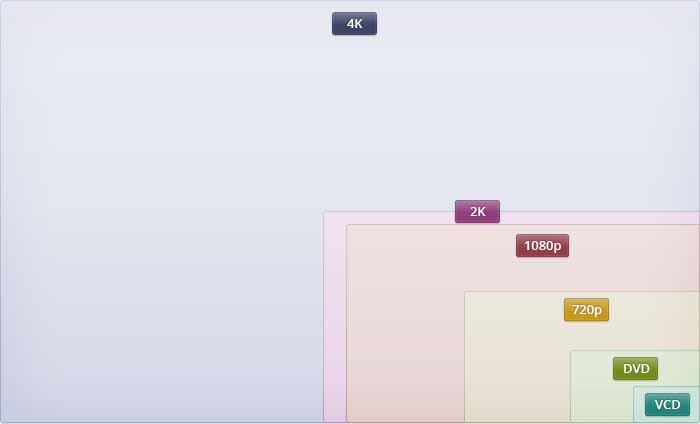Research by hire firm, Procam TV appears to show that demand for Ultra HD – or 4K – production in the UK is growing rapidly.
The firm, which has bases in Manchester and London ran a survey of clients in the television industry and more than a third said they expected to begin filming some content in 4K within the next 12 months. Only 9% couldn’t foresee a time when they would make the change.
“If 4K is to really take off, viewers need a wide choice of programme content available,” said John Brennan, managing director of Procam TV.
“There is huge enthusiasm around the industry for 4K, and we’re getting customers enquiring about 4K camera hire every day. These are the people that will generate the content that will attract consumers.”
One caveat here should be that Procam has just invested more than half a million pounds in Sony 4K cameras and Brennan was speaking at the “4K or not 4K” event hosted jointly with Sony.
What are all these K’s?
We’ve pinched this image from Procam because it shows how big a jump it is in resolution from your current HD picture to 4K and 8K. In very basic terms 4K is 4 times the resolution of HD, while 8K is 8 times.
Many people who watched the demonstrations of London 2012 in 8K at MediaCityUK and Bradford’s National Media Museum described the picture as like “looking through a window” such was the quality.
The trend
There are further signs that 4K and ultimately 8K are on the verge of breaking through. Not least the fact that Sony, which placed the Blu-ray in its PS3, has decided to support 4K video output in its new PS4. But consumer technology is still unbelievably expensive – a 4K television set will set you back around £25k and at 84” you’ll need an extension to watch it in – but the professional side is slowly coming down in price.
 Redray
Redray
The latest GoPro Hero camera has a 4K option, JVC has brought out a prosumer 4K camera, while Red has further livened up the market by dropping the price of its 4K Scarlet cameras and even announcing a 4K cinema player, which it’s selling for around £1000.
Canon and Sony have also been adding to their Ultra HD ranges and Blackmagic Design, which has its European headquarters in Cheshire, is starting to ship its cinema camera. With a 2.5K sensor and shooting in RAW to a solid state drive, it’s been described as a groundbreaking release, not least for its price tag of around £2,000.
Production implications
Since higher specification cameras have been using 4K for some time, many post production facilities have been used to taking in this higher resolution footage and downgrading it to high definition.
But, according to Timeline TV’s Eben Clancy, actually outputting 4K is going to mean going back to basics, purely because the computer technology isn’t quite ready for handling the huge files that are produced by the cameras.
“When we first got high definition footage, we’d edit it in standard definition and then, when it was completed, we’d up-res it back to high definition. With 4K, we’d be going back there again, we’d have to downscale it to high definition for the editing and then upscale it at the end.”
The BBC has already started shooting its first 4K natural history series. However the production team admitted that the entire post production process had slowed down as it struggled with the size of the files.
SIS, which has a base at MediaCityUK, has been trialling 4K outside broadcasts with the Sony F65 at Premier League games.












